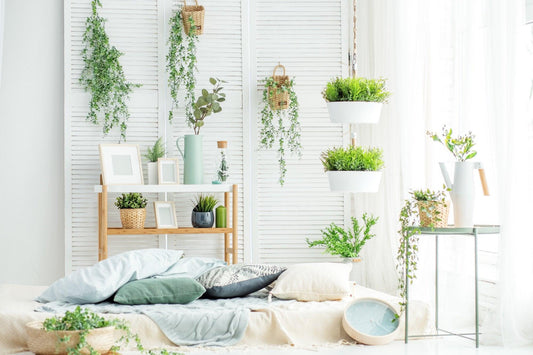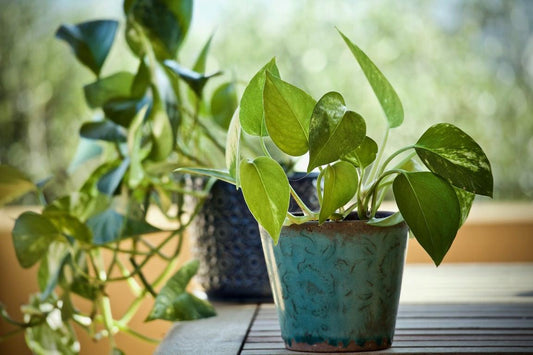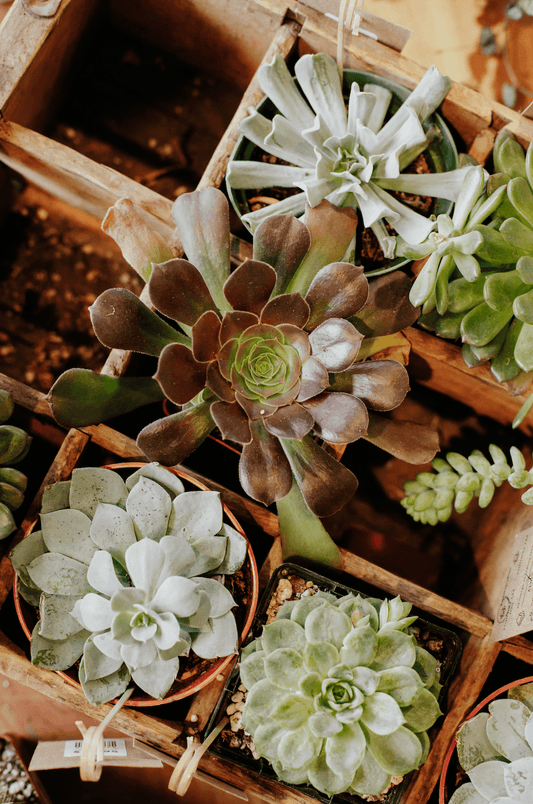EUPHORBIA
How to Care for the EUPHORBIA Plant
Overview
This genus of plants, also called Spurge, includes over 2,000 species. Most of them are succulents that resemble cacti, with fleshy leaves and even spines. These hardy, low maintenance plants may be grown as houseplants, or outdoor plants, and are common in many parts of the world. They vary in size, shape, and form, growing between 1-3 feet in height, and 2 feet in width. Euphorbia have modified leaves called bracts, which may produce flowers in the spring and summer if given the correct growing conditions in which to thrive.


Profile
Euphorbias include herbaceous plants, woody shrubs, and even deciduous and evergreen plants. One of the most recognizable varieties are the Poinsettia, an attractive potted plant with bright red leaves that are popular during the Christmas season. Its leaves also come in yellow, white, and pink. Another is the Crown of Thorns, a green leafy plant with small, colorful flowers. It is, like many other varieties of Euphorbia, highly toxic, as its spines and branches excrete a poisonous milky sap when broken. This sap is what gives Euphorbias their critter-proof reputation. It’s also a skin and eye irritant to humans, which is why it is advisable to exercise caution and wear gloves when handling the plant.
The easiest and quickest way to propagate Euphorbia is via cuttings. Using a sharp, clean knife, cut a piece about 3 inches long at the branching point, making sure to remove the leaves just above the separation point. Stir the ends in a glass of cold water to wash away any traces of the poisonous sap, then place the cuttings in a pot of damp, well-draining soil medium. Make sure to keep it warm and moist, but not wet to encourage root development.




Low light
Euphorbias do not need a lot of attention, making them easy to care for as a novice gardener. Watering must be done sparingly, though you’ll have to do so quite often until it’s established. As it matures, you’ll only need to water it when the top layer of the soil is dry to the touch. Use filtered water and make sure it’s planted in well-draining soil.

Occasional
They’re tolerant to a variety of climates, but prefer a spot in full sun, needing at least six hours of direct sunlight. They are happiest in hot temperatures and warm environments, with ideal temperatures averaging at 80 degreed Fahrenheit. Euphorbias can stay in cooler environments as well, but this depends on the species; some can handle a light frost. Humidity goes hand-in-hand with ventilation, as high humidity can lead to fungal diseases.

Easy breezy
FREQUENTLY ASKED QUESTIONS (FAQs)
on EUPHORBIA
Do I have to worry about insect infestations?
Thanks to the poisonous sap and the spiky needles, most insects aren’t too fond of Euphorbias. It’s still wise to watch out for common plant pests such as mealybugs and spider mites, though.
Are Euphorbias cacti?
Succulent types are often mistaken for one, but they’re members of a different plant family.
How do I deal with fungus on my Euphorbia?
Fungal infections take place when your plant is exposed to high levels of humidity and excess moisture, targeting both the roots and the stem. Once your plant is infected, it will turn limp, with lesions appearing on the stem. Unfortunately, neither cutting nor pruning can save your plant, so it’s best to prevent this by ensuring sunlight and temperature levels stay ideal.




